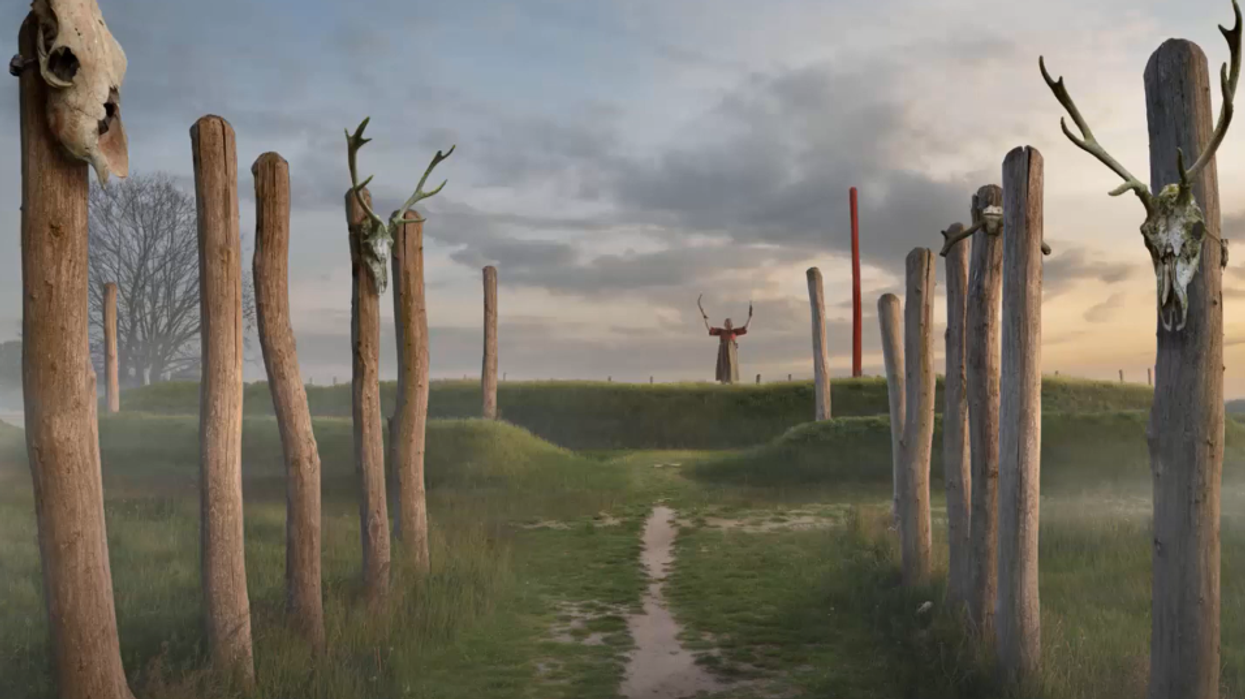
YouTube Quantend Video Screenshot

Archaeologists have discovered a 4,000-year-old structure, which has been dubbed the "Stonehenge of the Netherlands." The site is said to be a first-of-its-kind discovery by experts because of a special ornament from thousands of miles away.
Dutch archaeologists announced this week that they had unearthed an ancient burial mound containing the remains of nearly 60 men, women, and children.
The Guardian reported, "Studying differences in clay composition and color, the scientists located three burial mounds on the excavations, a few miles from the banks of the Waal River."
The archaeologists believe that the historical site had been used as a solar calendar – much like Stonehenge, the prehistoric stone circle monument in Wiltshire, England.
The site was first discovered in November 2016 during construction at an industrial area in the town of Tiel, Netherlands. Since the initial discovery six years ago, archaeologists have reportedly excavated more than a million artifacts dating from the Stone Age, the Bronze Age, the Iron Age, the Roman Empire, and the Middle Ages.
"The shrine must have been an important place," the town of Tiel stated in a Facebook post. "People kept special days of the year, performed rituals, and buried their dead. The shrine had been in use for 800 years."
"This sanctuary must have been a highly significant place where people kept track of special days in the year, performed rituals, and buried their dead. Rows of poles stood along pathways used for processions," the town said in a statement, according to Reuters.
Fox News reported, "The sanctuary was four soccer fields long in total and contains three burial mounds with the largest one being about 65 feet in diameter, which served as a 'kind of solar calendar.'"
The 4,000-year-old site had several passages, which allowed the sun to shine through. The "Stonehenge of the Netherlands," which is roughly 40 miles east of Rotterdam, aligned with the sun on the summer and winter solstices to inform locals of the longest and shortest days of the year.
"A person, for example, a priest or priestess, stood on the hill, which was flat on top and on which probably stood a large pole. The priest then viewed the position of the sun from the fixed point of the pole. There were more posts around the hill as markers. They helped the priest determine the exact time of the year, a spokesperson for the archaeologists told De Telegraaf, the largest newspaper in the Netherlands.
"On certain days the sun shone straight through those passages on the hill," the spokesperson said. "Just like in Stonehenge, where the sun shines through the stones on important days."
The town of Tiel said on Facebook, "In the places where the sun shone straight through the openings, archaeologists also found sacrifices."
On the burial site, archaeologists discovered animal skeletons, human skulls, and valuable items. Archaeologists found a bronze spearhead and a single glass bead in the grave of a woman. The bead is significant, since it is likely from thousands of miles away, and experts believe the bead is the oldest one ever found in the Netherlands.
Chief researcher Cristian van der Linde said the glass bead is from Mesopotamia – present-day Iraq, approximately 3,000 miles away from the burial site in the Netherlands.
"Glass was not made here, so the bead must have been a spectacular item, as for people then it was an unknown material," said Stijn Arnoldussen, a professor at the University of Groningen.
"Things were already being exchanged in those times," Arnoldussen said. "The bead may have been above ground for hundreds of years before it reached Tiel, but of course, it didn’t have to be."
The statement from Tiel said, "This is the first time a site like this has been discovered in the Netherlands."
Some of the ancient artifacts will be showcased in a local museum in Tiel and at the Dutch National Museum of Antiquities.
Like Blaze News? Bypass the censors, sign up for our newsletters, and get stories like this direct to your inbox. Sign up here!
Archaeologists unearth 4,000-year-old Stonehenge of the Netherlandswww.youtube.com